Nay Pya Taw, 7 October 2016 – Coinciding with World Habitat Day on 3 October, more than one hundred participants from regional and national institutions participated at the presentation of the Myanmar Climate Change Alliance Programme (MCCA) and Environmental Conservation Department (ECD) provisional results of the climate change vulnerability assessment for Pakokku (Dry Zone) and Laputta (Delta Area), in Myanmar.
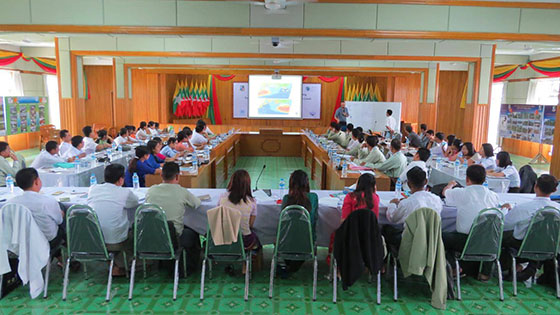
Participants from several departments in several states and regions at the training are trained on assessing climate change at local level © MCCA, 2016
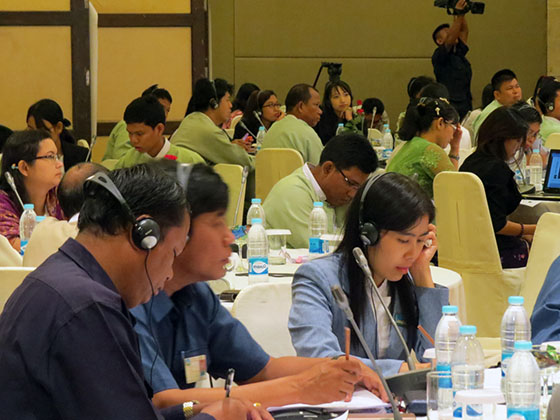
Participants from different states and regions, from different departments (township administration, engineering, environment, planning, agriculture) at the presentation of provisional findings of climate change assessments © MCCA, 2016
Following this, staff from all over the country were trained on techniques to assess vulnerabilities to climate change in townships. The MCCA is funded by the European Union and implemented by UN-Habitat and UNEP within the Ministry of Natural Resources and Environmental Conservation of Myanmar.
Findings are alarming. In Pakokku there may be increase in temperatures by 2050 of between 1 to 2.7 Degrees Celsius, with a rainfall variation of 9-28% of additional rain concentrated in the wet season, and increasing hot days, within a shorter monsoon season. This will lead to more droughts, floods, heat waves, that can create loss in crops productivity, fatalities, and destruction of infrastructure amongst others.
In Laputta, temperatures may increase between 1 to 2 degrees Celsius, with 3-24% of additional rainfall concentrated in the wet season, increasing hot days, a shorter monsoon season and a possible sea level rise between 20cm and 41cm. This will lead to stronger cyclones, floods, salinization and this in turn can lead to loss of agriculture productivity, large inundations, displaced populations and migration, amongst others.
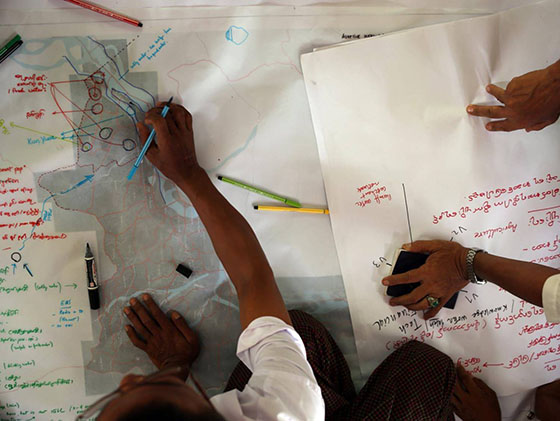
Participatory hazard mapping in Pakokku, © MCCA, 2016
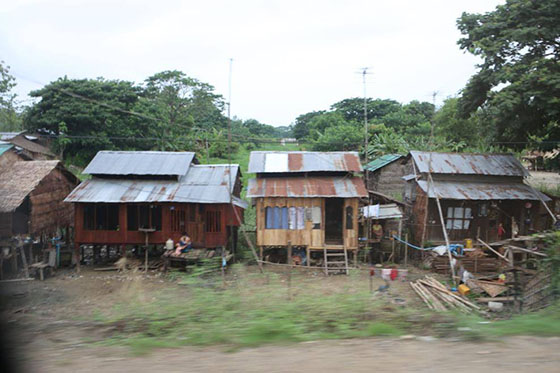
Infrastructure will require significant improvement if they are to withstand the heightened risks of disasters in the next years © MCCA, 2015
A more accurate understanding needed
At the opening of the workshop, H.E. U Khin Maung Yi, Permanent Secretary of the Ministry of Natural Resources and Environmental Conservation, said: “Addressing climate change is a priority for Myanmar…a more accurate understanding of the underlying causes of vulnerability and future scenarios at local level, where people bear the brunt of the effects of climate change” is needed.
The assessment of Laputta and Pakokku showed a high vulnerability of people against these changes. There is an insufficiently diversified economy, with low technical and vocational skills that reduce employability. Agricultural outputs are already challenged and will be ever more so in the next years.
Communities depend highly on ecosystem services and degradation put them in a difficult situation. For instance, wood provides 87% of the construction materials, while 75% of cooking energy, in addition to protect populations from strong-winds, landslides and flash-floods among others: eco-system and especially forestry is an important asset to enhance and protect in the context of climate change.
The high reliance on rain-fed agriculture is also a source of concern, as days of rain will be reduced and stronger rain and salinization will affect crops. Water harvesting for drinking water in Laputta also represents 95% of sources for drinking water and this will be a problem with higher evaporation and less days for water harvesting.
Both Pakokku and Laputta will be exposed to more severe natural hazards. Construction techniques, and modes of transport in Laputta, may not withstand stronger winds, or larger sudden flood surges.
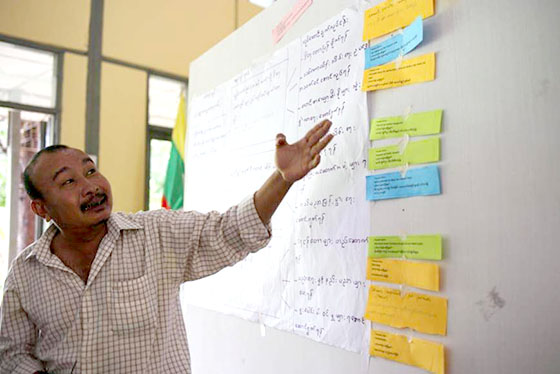
Prioritization of adaptive measures to enhance and protect eco-system in Laputta, Delta Area, Myanmar © MCCA, 2016

Villages administrators in the Pakokku township, discuss adaptive measures in the socio-economic area © MCCA, 2016
Investing in protecting ecosystems
According to the Chief Technical Advisor of MCCA, Mr. Pasquale Capizzi, this will require urgent focus on adaptation, by “investing in protecting the eco-system; building adequate infrastructure in the right location; and protect and diversify economic sectors, particularly agriculture, while learning new skills”.
With this awareness and new evidence, communities in both townships designed action plans to anticipate and mitigate these impacts. These action plans are based on achieving a Healthy Eco-System that protect and provides for people; a diversified economy and improved technical skills; and a resilient infrastructure that protect people and households. Examples include fighting illegal fishery, restoring mangroves; vocational trainings, insurance schemes; resilient housing construction; improved water harvesting techniques.
These and others were the findings the MCCA technical team communicated with a spatially-based methodology that indicates where vulnerabilities are, and where adaptive development must go.
Results of these studies will be published in December 2016, while implementation of adaptive measures are already on-going in Laputta and Pakokku with the MCCA grants.







